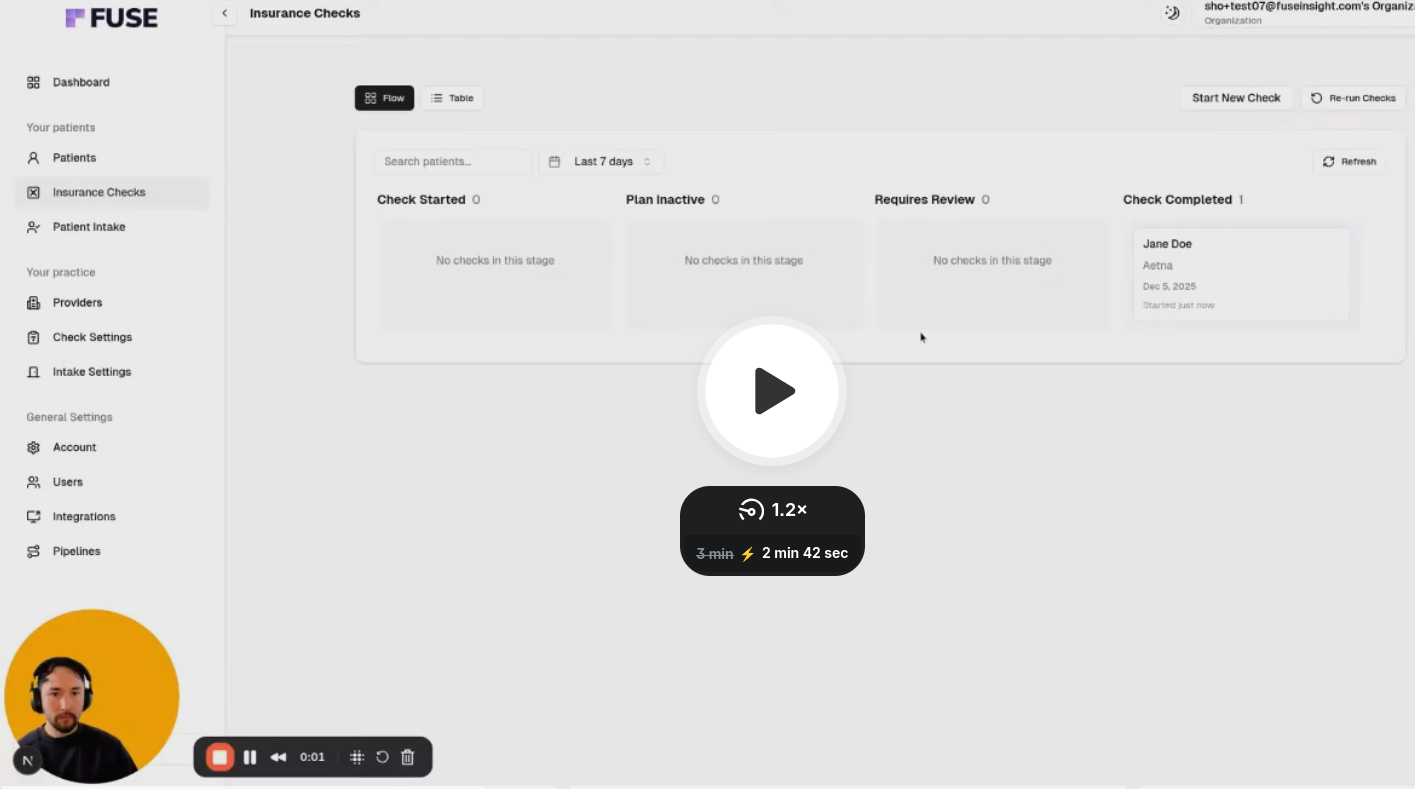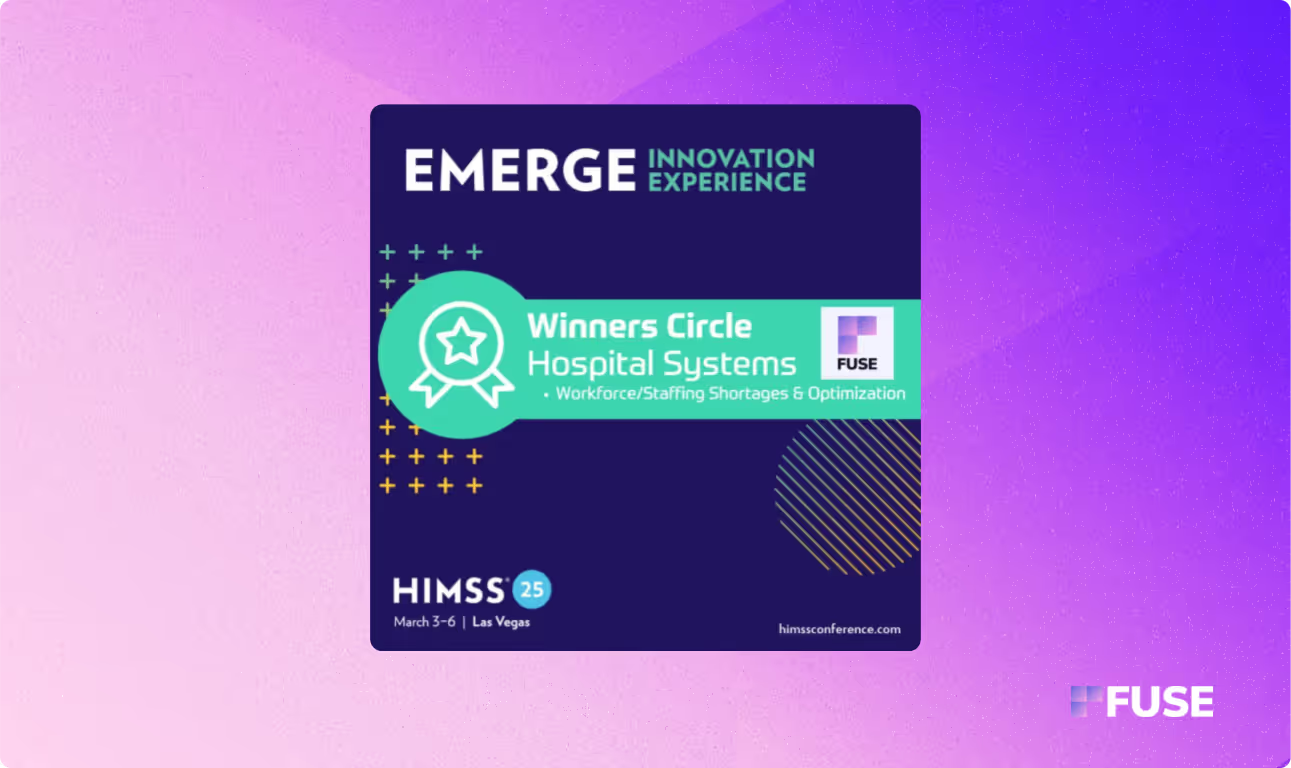How Transparent Healthcare Pricing Drives Patient Fee Transparency Success
In the world of healthcare, trust is everything. However, many patients find it difficult to trust their medical providers, and a significant part of this is due to a lack of transparency. One survey found that around 41 percent of respondents believed that their healthcare providers weren't being transparent about the costs of their medical care. That's a significant issue that practices should work to resolve.
Numerous studies show that medical bills are a major source of stress and anxiety for patients. One study suggested that more than half of patients find medical bills a top source of stress. Another found that 34 percent of respondents have lost trust in providers due to an overwhelming and stressful billing experience.
Better healthcare price transparency can help alleviate that anxiety, paving the way for an informed and confident patient experience. A recent study showed that patient fee transparency has a measurable impact.
As a healthcare provider, it's vital to provide accurate and transparent medical cost estimates. In addition to doing better by your patients, healthcare billing transparency can help ensure that your practice complies with all Centers for Medicare & Medicaid Services (CMS) requirements, including those for good faith estimates.
In this blog, we'll explore how transparent pricing in healthcare makes a difference and how your practice can take steps to provide more accurate estimates for patients.
The Direct Connection Between Healthcare Price Transparency and Patient Satisfaction
Patients care about healthcare price transparency, and it frequently affects their loyalty to providers. In one study, 40 percent of respondents stated that they would delay or cancel care appointments if they didn't receive cost estimates beforehand. Other studies found that up to 60 percent of patients will seek care elsewhere if pricing and billing aren't up to par. Transparency significantly impacts patient satisfaction, and that's not just hearsay.
For one health system, a shift to what some called "radically" transparent medical cost estimates proves just how much patients care about understanding healthcare costs. When this health system began providing unprecedented access to pricing information, its patient satisfaction healthcare rates rose to 82 percent in just one year.
For the average patient, pricing remains a mystery. In one survey, 68 percent said they don't know how much an appointment will cost until months afterward. When they eventually do receive a bill, 61 percent said that it was more confusing than a mortgage payment!
Transparency matters, and it's clear that a lack of it will negatively impact patient satisfaction. It's not difficult to see why. Those unknowns are stressful, and surprise bills can erode trust with providers faster than most realize.
By prioritizing accurate and open patient cost estimates, practices can mitigate the risk of unexpected costs, foster trust and reduce patient anxiety. That transparency also helps with better treatment compliance while dramatically improving patient-provider relationships and ultimately enhancing patient retention.
Why Patient Fee Transparency Matters More Than Ever
The healthcare landscape continues to transform, not just in terms of regulatory requirements but also in patient expectations. Patient satisfaction in healthcare is always a top priority, and pricing transparency is emerging as a crucial factor that influences the success of healthcare practices.
In a post-pandemic world, patients are increasingly seeking clarity in pricing. According to one study, 69 percent of patients are interacting with providers differently than they were pre-pandemic, with 71 percent wishing that the experience was as easy as other areas of their lives. Another found that 9 out of 10 patients now want to know their payment responsibilities upfront.
On the regulatory front, health plans and hospitals have a legal obligation to provide pricing information. CMS requirements aim to promote healthcare price transparency, enabling patients to compare prices and make informed decisions about their care. New regulations went into effect in 2025, and rules surrounding transparency continue to evolve.
Failing to comply could lead to penalties. Furthermore, a lack of transparency could harm a practice's reputation and ability to retain customers. Healthcare providers and practices that embrace transparency encourage patients to remain loyal, even as healthcare costs rise. With an estimated 94 percent of Americans supporting transparent pricing in healthcare, failing to meet the mark could cost your practice. Alternatively, going above and beyond gives your practice a competitive advantage.
Implementing Transparent Pricing Healthcare Solutions in Your Practice
Providing transparent patient fee estimates is more challenging than most realize. According to a recent audit by a patient advocacy group, just 21 percent of hospitals in the U.S. were complying with new federal rules. Complying with new regulations and meeting patient expectations requires a structured approach. Here are a few steps that practices can take:
•Define Your Objective: Start by identifying your goal in providing patient fee estimates. For most practices, the ultimate objective is to offer estimates upfront, before patients arrive at the clinic. That should take precedence, as early upfront information can significantly reduce billing department calls while also streamlining collections. It ensures patients understand their financial obligations from the jump, which helps prevent collection failures.
•Understand Payer Contracts: When implementing transparency strategies, practices must fully understand payer contracts. Review contract information thoroughly. Practices need to know whether they're in-network for a patient's insurance and what "allowed amounts" apply. Otherwise, providing accurate medical cost estimates on a per-patient basis becomes near impossible.
•Adopt Tech Solutions: There are ways to provide estimates manually. For instance, administrators can create spreadsheets with allowable amounts by CPT code and payer plan type. That cheat sheet can help develop estimates, but it still requires significant manual labor that could lead to errors. The best way to save time and effort is to adopt tech solutions that automate that process. Software like Fuse can automatically calculate fee estimates in minutes, removing some administrative burden while providing more accurate figures.
•Integrate Tools with Practice Management Systems: When leveraging digital tools, they should integrate with EHR and practice management systems. Seamless integration helps simplify workflows and reduce errors. These tools and systems can share data to improve accuracy and save time.
•Invest in Staff Training: Staff training is pivotal. Teams need to know how to provide accurate estimates, use applicable tools and communicate information to patients. It's also wise to ensure that everyone is familiar with transparency requirements to help maintain compliance.
Best Practices for Medical Cost Estimates and Patient Communication
Beyond those steps to implementation, there are many patient fee transparency best practices to follow.
•Timing: Timing matters. You want your patients to understand relevant costs before you administer treatment. The best approach is to provide patient cost estimates before their visit. Early disclosure can ease worries and reduce cancellations. It builds trust from the start and provides ample time for patients to ask questions if necessary.
•Format Preferences: There are many ways to communicate cost estimates. The best option is to provide standardized documents. Use plain language and avoid complicated medical jargon. Documents should include itemized costs whenever possible and utilize visual aids to facilitate understanding. Forms should be accessible via digital formats for early delivery.
•Follow-Up Communications: Transparency doesn't end upon estimate delivery. Provide follow-up reminders and encourage patients to reach out. Include contact information and emphasize your practice's commitment to transparency and patient-focused care.
•Consistency: Finally, ensure medical cost estimates are consistent across digital portals, phone calls, in-person communications, etc. Different figures will only erode trust. Using digital tools to automatically calculate fee estimates can help with data inaccuracies that lead to discrepancies.
Overcoming Common Patient Fee Estimates Implementation Challenges
There's a reason why audits find compliance to be so low. There are many challenges to providing transparent pricing in healthcare.
One is insurance complexity. Different payers have varying rules and restrictions, which often makes it difficult to provide accurate estimates. Here's where a thorough understanding of payer contracts, combined with the use of automation, makes a significant difference. Insurance verification and fee estimate tools can cut through the confusion, providing accurate data for every patient.
Varying costs for specific procedures and treatments also come into play. Practices can overcome this challenge by creating standardized pricing templates. Strong communication with patients is also vital. Explaining some of the pricing variability can help minimize disputes and avoid significant billing surprises.
Finally, staff resistance to healthcare price transparency can impact implementation. Many see transparency efforts as increased workloads and greater risks of mistakes. However, you can alleviate those concerns by using the right digital tools. Software can do much of the heavy lifting, actually saving administrators time while also reducing patient complaints and improving collection rates.
The best way to implement new strategies is to do so in stages. Phased implementation can ease your practice into a better way of doing things. Consider adopting techniques and workflows slowly. Doing so will allow your practice to measure success, make improvements and ensure positive results.
Measuring Success: Healthcare Billing Transparency Impact on Practice Metrics
Measuring the success of your new transparency efforts can prove their value to stakeholders. There are several metrics to monitor. These include patient satisfaction in healthcare scores, billing dispute rates, collection efficiency, pre-visit inquiries, patient retention rates, no-show rates and more.
As you measure these metrics, you'll quickly see how a dedication to transparent pricing in healthcare makes a difference. The ROI potential is significant. When presenting the value of your initiatives to stakeholders, highlight the impact on revenue and patient satisfaction. You can also emphasize changes in operational efficiency, showing how your efforts are making things easier for staff across the board.
Transform Patient Experience with Clear Fee Communication
Transparent healthcare pricing is more than just a regulatory requirement. It's also a competitive advantage that can help boost your patient satisfaction scores, improve retention and create an overall better experience for patients. Trust is the foundation of any strong patient-provider relationship. Transparency about healthcare costs is a massive step in the right direction.
Fuse can help you streamline the estimate process, providing greater transparency and more accurate numbers than ever before. With Fuse, you enjoy automated calculations, real-time insurance verification, impression integration capabilities and more. Use Fuse to improve patient engagement, increase your practice's operational efficiency and gain that competitive edge you need to reach the next stage of success.
Schedule your Fuse demo today to learn more and see how automated patient fee estimates can transform your practice.
FAQs
Fee transparency directly impacts satisfaction rates. Over 90 percent of Americans favor transparent healthcare pricing. Providing clear cost estimates can reduce patient anxiety, eliminate unexpected expenses and empower individuals to make more informed decisions about their care.
The CMS requires providers and insurers to make certain pricing information accessible to patients. Some key requirements include pricing information about "shoppable" services and good-faith estimates to uninsured or self-pay patients.
There are several ways that practices can overcome insurance variables when providing patient cost estimates. Standardized pricing templates, automated insurance eligibility verification and digital tools to calculate estimates go a long way. Practices should also communicate pricing variability with patients to prevent surprises.
Tools like Fuse can streamline workflows to provide more accurate and transparent estimates to patients. Fuse offers seamless EHR and practice management system integration, real-time insurance verification and estimate calculations. Tech solutions can save time, reduce errors and support transparency strategies.
Many studies have shown that patients prefer upfront pricing, and more than half are willing to switch providers if they have a negative billing experience. Transparent pricing in healthcare helps build trust. It alleviates pricing concerns and encourages patients to stick with their providers. It becomes a competitive advantage for practices.








.avif)
.avif)
.avif)

.avif)
.avif)


